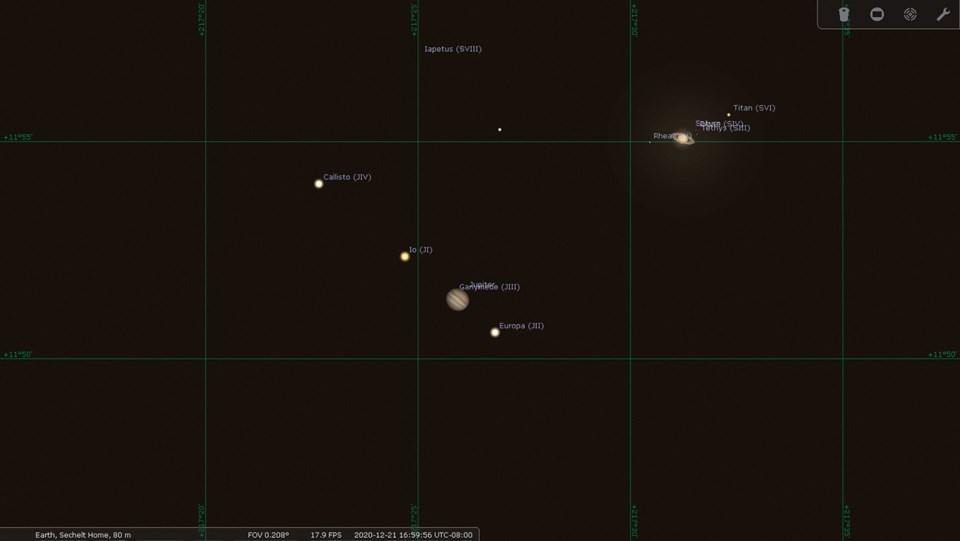We’ll close out 2020 with two interesting conjunctions. The first will happen Dec. 12, with the Moon and Venus about 3 degrees apart just before sunrise in the southeast. As the day progresses, the Moon’s orbital motion will carry it steadily nearer to Venus. Just before 1 p.m. the top left limb of the Moon will cross in front of Venus – an occultation – that will last until about 1:45 when Venus reappears from behind the top right limb of the Moon. Yes, the Moon actually orbits the Earth from west to east; it moves about 13 degrees eastward every day but it’s only when you have another object close to it that you can actually see the Moon moving.
On Dec. 14, two days later, the Moon will pass between Earth and Sun for a total solar eclipse. Unfortunately for us, only a narrow strip of Chile and southern Argentina will be able to see it. As well, Mercury will be too close to the Sun all through December to be visible. What we may be able to see, however, is a bit less spectacular – the Geminid meteors. These radiate from the constellation Gemini and should be visible for a number of days around the predicted peak on the evening of Dec. 13-14. Their zenithal hourly rate – average maximum number visible per hour - is right up there with the Quadrantids and the Perseids so, with no Moon and a clear sky we might have a real show. Apparently, the Geminids are the only meteor stream that does NOT originate from a comet. Instead it appears to be debris from an asteroid, 3200 Phaethon, which has an unusual orbit in that it approaches the Sun to within about 12 million miles and gets routinely cooked to a crisp with each approach.
Mars is still fairly bright although it’s starting to shrink since we passed it Oct. 13. Its maximum size was 22.57 arcseconds on Oct. 6 and it’s down to about 14 by Dec. 1.
Jupiter and Saturn are low in the southwest after sunset and have been approaching each other during November en route to their spectacular conjunction on Dec. 21. They will pass each other about 0.1 degree apart – about 1/5 the width of the Moon – in their closest approach since 1623! Our best observing window – weather permitting (and if you know any sure-fire prayers/voodoo/whatever, feel free) – will be around 5 p.m. on the 21st. Jupiter and Saturn will be low in the southwest – about 10 degrees above the horizon – and within about 10 arcminutes of each other – that’s one third the width of the Moon! The next time they’ll be this close will be March 2080.
The “Heavens Above” website at www.heavens-above.com will show you a star chart for anyplace/anytime to check out all the above events, as well as a lot of other info.
The next Zoom meeting of the Astronomy Club will be Dec. 11 at 7 p.m.; the guest speaker will be Don Hladiuk of the Calgary Centre of the RASC. Don is a highly experienced observer with a number of eclipse expeditions under his belt. The club website at https://sunshinecoastastronomy.wordpress.com/ will have information on the speaker and topic and how to register for the meeting the week before the meeting.
– Richard Corbet



